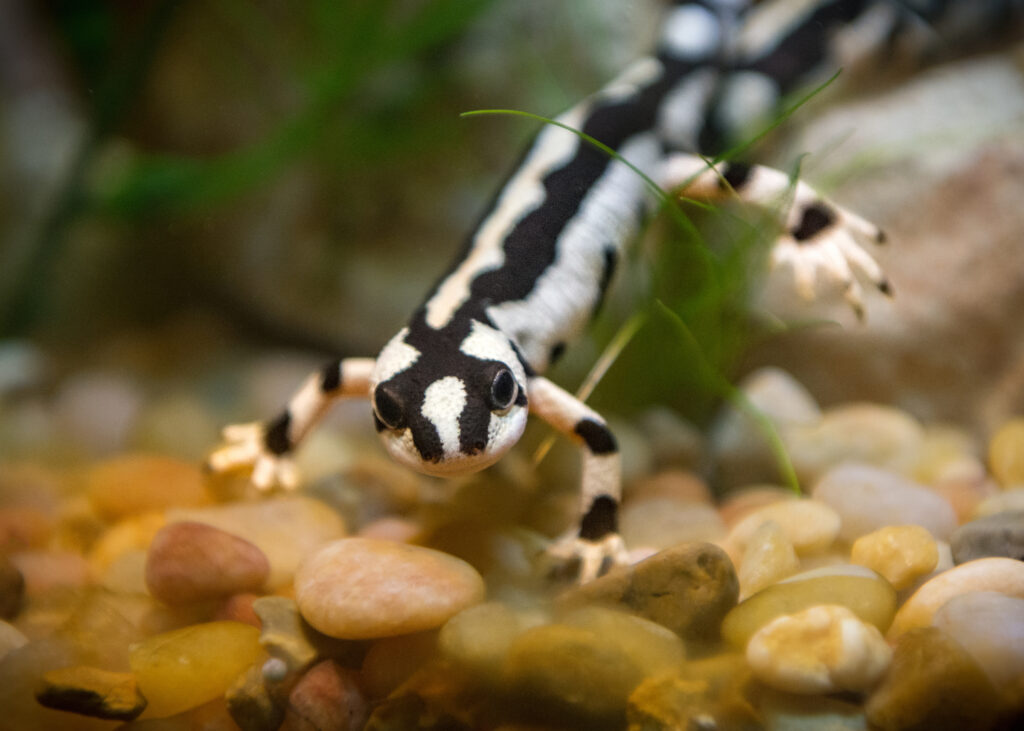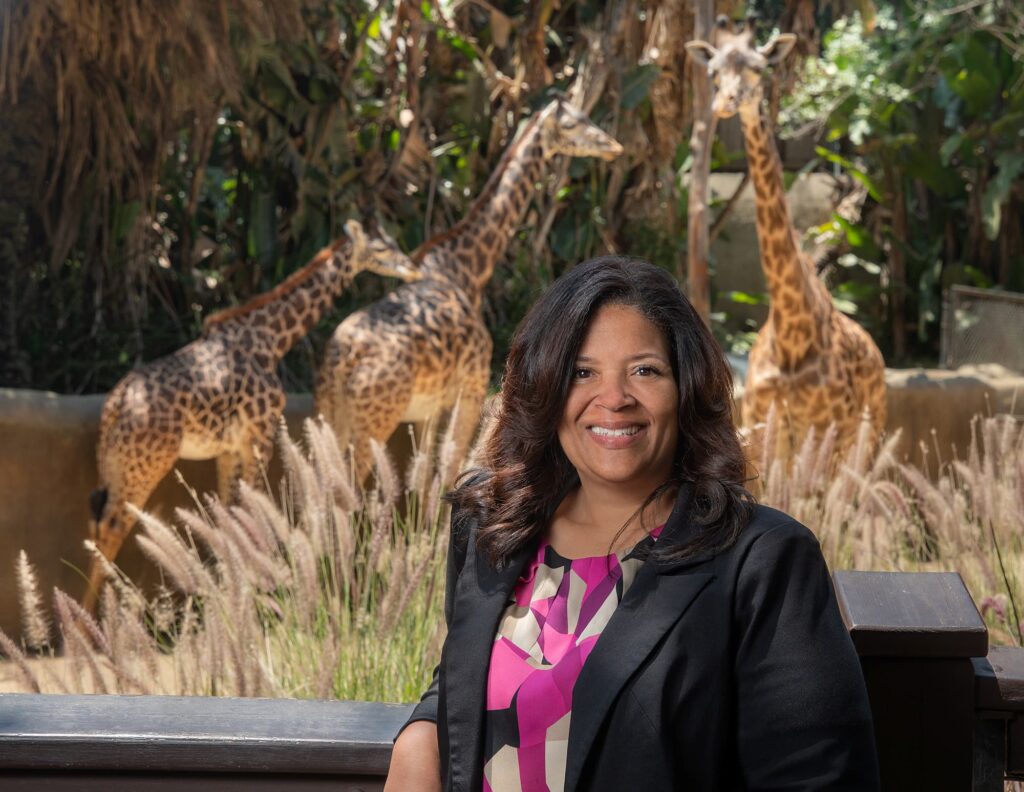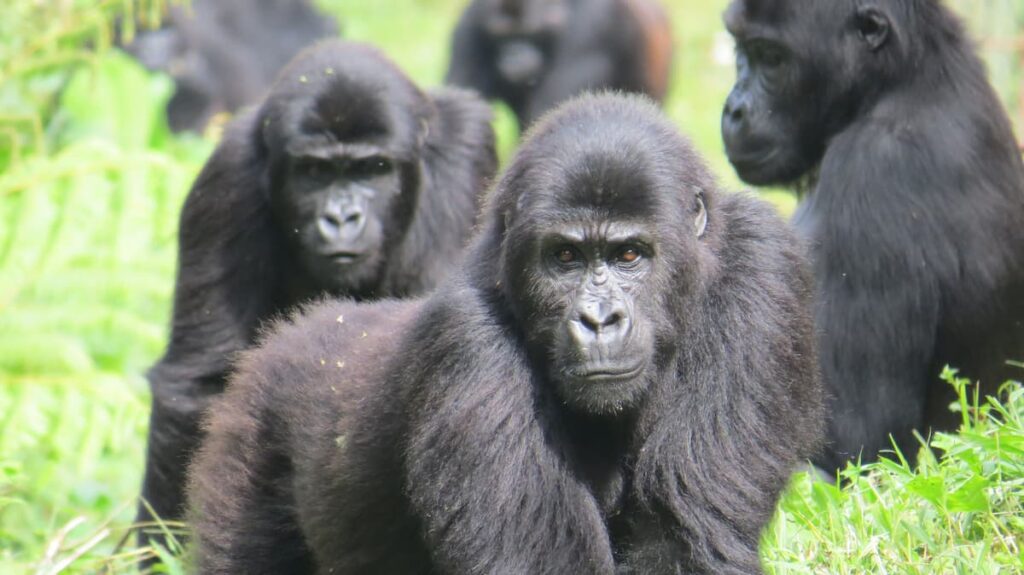
With mining for cell phone components driving gorillas to the brink of extinction, the species’ survival may literally lie in the palm of your hands.
Recycle a cell phone—help save a gorilla’s life.
Sounds overly simplistic, but it’s true. Recapturing the precious minerals locked inside the 500 million dead or dormant phones estimated to exist in the U.S. alone would drastically reduce the need for mining in the Congo, where the activity has wreaked havoc on gorillas and other animals that share their embattled habitat. When cell phones are tossed in the trash, the problem is compounded—and the effects hit closer to home. Electronic devices in landfills leach arsenic and other toxins into ground water, causing human health consequences on top of environmental damage. Diverting these devices from landfills also reduces greenhouse gas emissions, which most scientists believe are driving global climate change.
We all know we should recycle, but we don’t always connect the dots from understanding to action. While moving recently I found five outdated cell phones gathering dust in the family garage, along with countless cables, chargers, and gadgets of unknown origin that I hadn’t gotten around to recycling. I understood the importance but not the urgency of the situation. I didn’t realize that Grauer’s gorillas—a subspecies severely impacted by the consumer electronics explosion—have suffered a 77 percent population decline in the last few decades. I knew that funds raised by cell phone recycling benefit endangered animals, but was surprised to discover that Eco-Cell, the Zoo’s partner in these efforts, also donates refurbished phones directly to field conservation projects. At the Gorilla Rehabilitation and Conservation Education Center (GRACE), such phones have been used to speed diagnosis of sick gorillas.
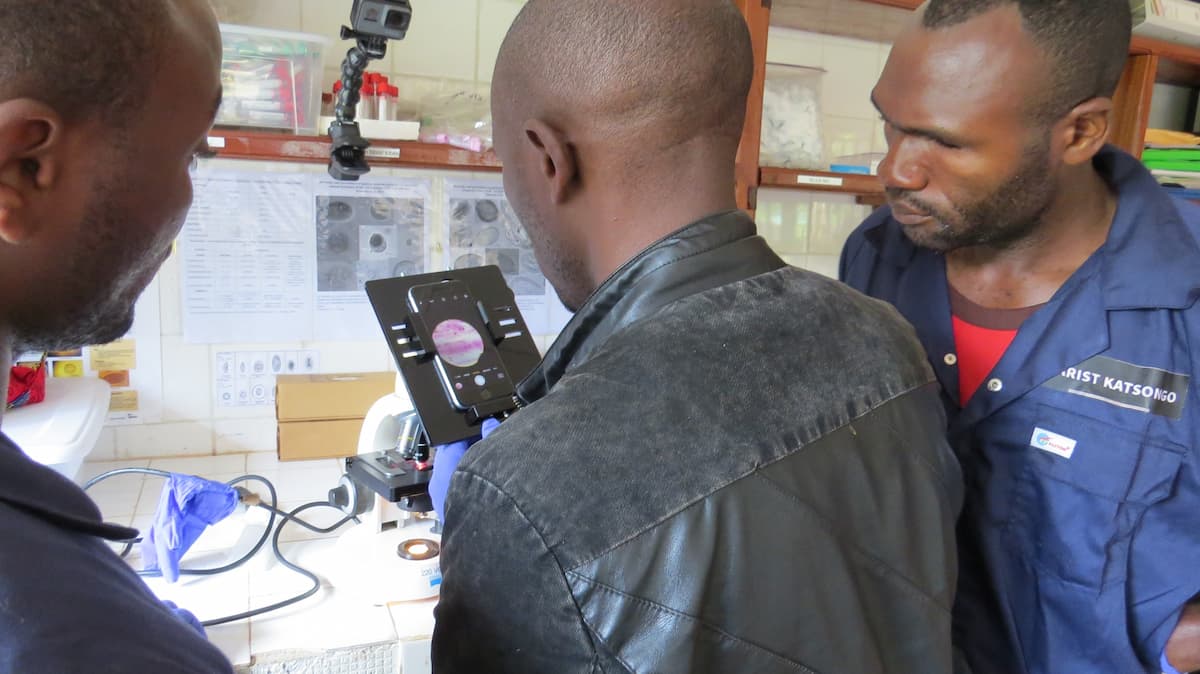
So, yes, that old phone languishing in your desk drawer or garage (or mine) could literally save lives.
Of course, we can’t roll back the clock on the technological revolution—even if we wanted to. “We’re not going to stop using cell phones,” says Beth Schaefer, Director of Animal Programs for the Los Angeles Zoo and Botanical Gardens. “It’s just not going to happen. But there are actions we can take to lessen their impact.”
Making the leap from understanding to action is easier if you understand the problems and processes involved. Let’s take a closer look.
The Three Ts
Tantalum, derived from columbite-tantalite (also known as “coltan”), is a critical component in cell phones. “Tantalum coats the capacitors and allows for the miniaturization of cell phones, to make them nice and thin and small and useful,” explains Eco-Cell president Eric Ronay. “It holds an electrical charge better than any other material. So it’s very valuable to a cell phone.”
The majority of the world’s supply of coltan is found in the Democratic Republic of the Congo (DRC). Since the early 1990s, skyrocketing demand for tantalum has led to a “coltan rush” that has created a conservation crisis, crippled the country’s agricultural industry, and contributed to civil war. While their distribution is more widespread, tungsten (used to make cell phones vibrate) and tin (used to create solder for circuit boards) are also mined in the DRC. These are the “three Ts” which, along with gold, are generally what is meant by the term conflict minerals. Like conflict diamonds (a.k.a. blood diamonds), the term refers to raw materials originating from an area of civil war or unrest and sold to finance the violence.
The concentrated presence of these minerals in the DRC has led to uncontrolled mining in this highly biodiverse, ecologically sensitive region. “They destroy the habitat getting in there,” says Ronay. “If you see pictures of these mining operations, it looks like a moonscape after they get finished with it.”
Mining is poorly regulated in this part of the world, and many operations are run by ruthless militias. In addition to the environmental devastation, these militias are responsible for horrific human rights abuses against civilians.
Most Congolese mines are small “artisanal” operations—a far cry from the industrialized mines we’re familiar with in the United States. Artisanal mining uses little technology or machinery. To extract coltan, laborers dig craters into stream beds by hand, a grueling and dangerous activity that is often performed by young children. (Amnesty International reports that as many as 40,000 children are working in mines in the DRC, some as young as seven years old.)
Then there’s the poaching. “Each mine, whether legally operated or not, involves a set-up in the forest that requires not only destruction of the land to unearth the minerals, but numerous people to operate the mining sites,” says Dr. Tara Stoinski, president and chief scientist of Dian Fossey Gorilla Fund International. “To feed these people, wildlife is hunted from the surrounding forests. This includes gorillas, chimpanzees, elephants, and many other species.” Trade in “bushmeat” (exotic animals killed for human consumption) is illegal, but in this war-torn region, such laws are virtually unenforceable.
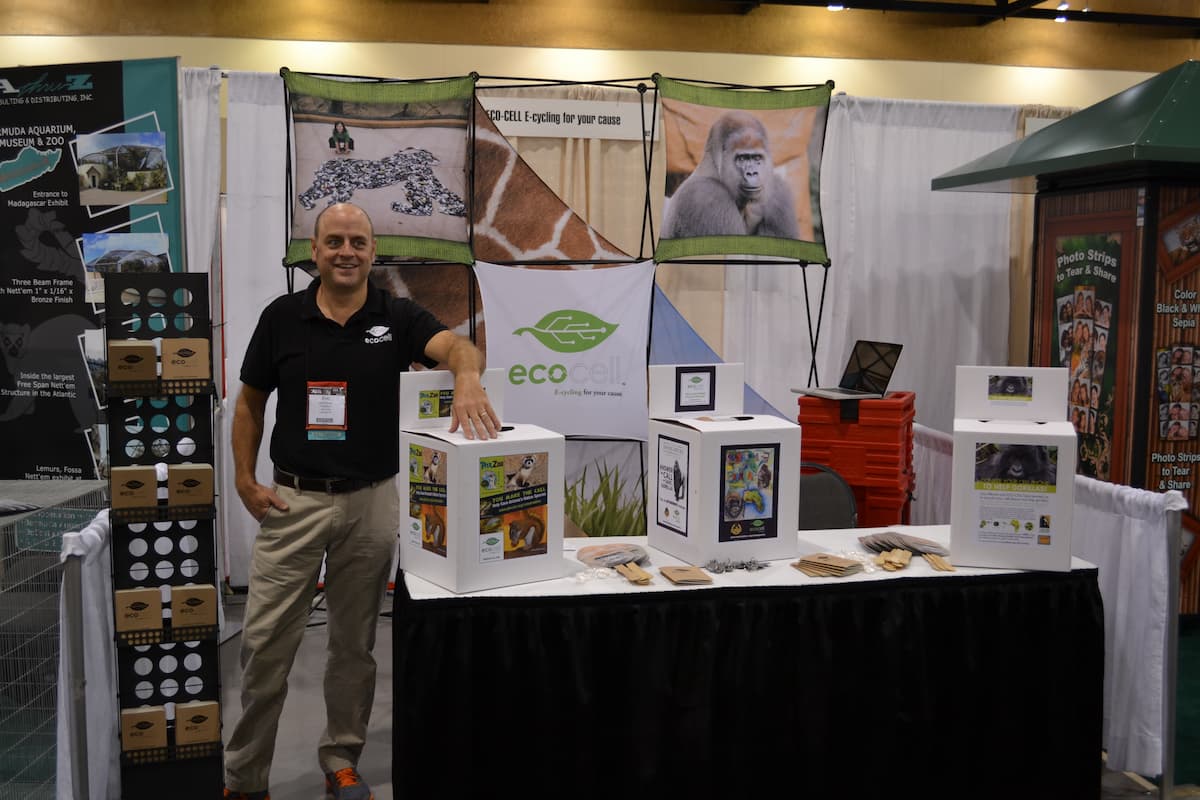
A Valuable Lesson
Since the average consumer is unfamiliar with the three Ts, to get his message across—especially to younger audiences—Ronay often points to the presence in cell phones of a better-known commodity: gold.
“I visit zoo camps every summer,” he says. “When you start talking to kids about the magical properties of tantalum, their eyes kind of glaze over. It’s an abstraction to them: they don’t quite get it. But when you tell them there’s gold in cell phones, and it can be reclaimed, it’s like a lightbulb goes off.”
At this point in his presentation, Ronay will often break open a cell phone to show his audience where the gold is located. “Their eyes light up and they go crazy,” he says wryly. “It’s not the approach that I would personally like to take, but it gets their attention. And then I’ll tell them, ‘And by the way, there’s a whole troop of gorillas down the way; go take a look at them.'”
Their curiosity piqued by gold’s allure, the campers are more receptive to the environmental message. It’s Ronay’s way of connecting the dots from understanding to action.
(Kids: Before you entertain ideas about smashing your phones to get at the gold, it’s worth noting that the amount inside each phone is tiny—it takes about 41 mobile phones to yield one gram!)
Zoo Roots
Zoos are among the largest contributors to Eco-Cell’s recycling efforts. In fact, the Kentucky-based firm traces its roots to the local zoo. “We’ve been lifelong members of the Louisville Zoo, and friends with Bill Foster, who was the executive director. He told us about the connection between gorillas and what goes into cell phones.”
That was back in 2003, around the time the Louisville Zoo’s Gorilla Forest exhibit opened. “It was the Wild West of electronics,” Ronay says. “Manufacturers were pumping these things out into the consumer populace without any consideration of what happened after that.” Compassion for the conservation crisis got the family’s attention, but profit potential spurred their initial action. “My dad is an entrepreneur, and he picked up on a business idea. ‘Hey, we love gorillas, and we want to make some money, so why don’t we connect the two,'” Ronay explains. “Bring awareness to the problem and give people something they can do to actively contribute to the conservation of the species.”
Bill Ronay worked with Foster to install a cell phone collection box at the Louisville Zoo, and Eco-Cell was born. “Lo and behold, it just kind of exploded,” his son recalls. More and more zoos got involved (a total of 110 at the program’s zenith). “Next thing you know, we’re moving from building to building trying to accommodate the volume of cell phones that were coming in to us.”
Eric Ronay helped grow the business and took over the reins in 2006, when his father’s entrepreneurial spirit led him in a different direction. An avid animal lover, Ronay’s passion for the cause has helped him weather dramatic changes in the industry. “At one point, we were recycling 70,000 cell phones a year. That’s all changed now. Once the smartphone came on the scene, the wireless companies began to care about what happened to them downstream. Because they’re little computers—and they cost so much to manufacture—the companies had to devise a way to get them back.”
With an increasing number of firms offering trade-in incentives, or leasing rather than selling their smartphones to customers, the quantity (and quality) of donations to Eco-Cell have sharply declined. “It’s one of those instances where economics is helping solve the problem,” says Ronay. “Not for the right reasons, but simply for financial gain. I can respect that. But obviously, as someone who supports conservation, I was hoping for more.”
He’d hoped that one of the major manufacturers would take the lead in shifting the industry toward more environmentally responsible practices, such as embracing the concept of “gorilla-safe phones.” Since tantalum, tungsten, tin, and gold are not “visible” components of cell phones, it’s virtually impossible for consumers to know where they came from. Much like the “dolphin-safe” designation on many tuna brands makes it easy for consumers to make informed decisions, phones would be certified “gorilla-safe” if they contained only legally obtained, responsibly sourced materials.
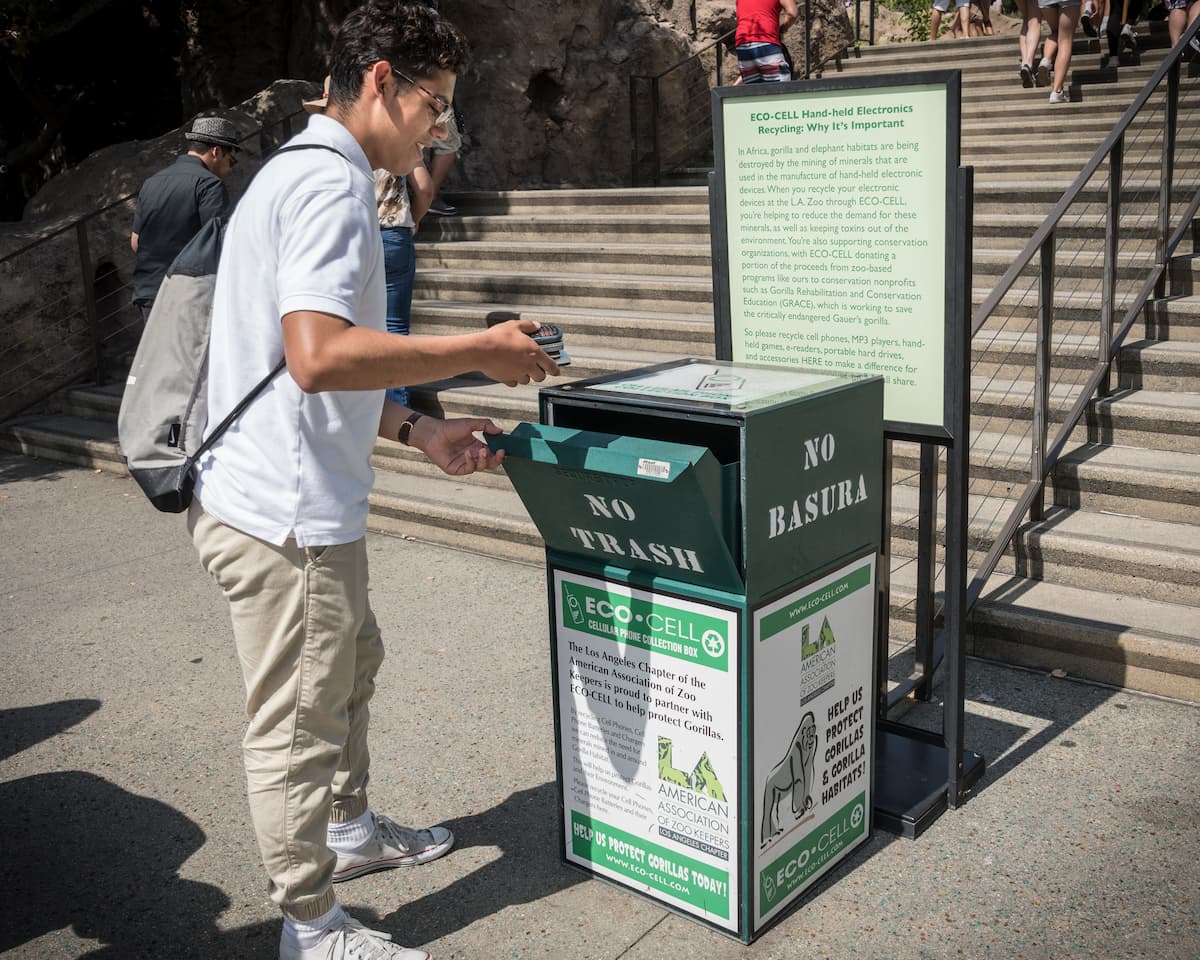
At Our Zoo
The L.A. Zoo’s cell phone recycling program was spearheaded by the L.A. chapter of the American Association of Zoo Keepers (AAZK/LA). An Eco-Cell collection box was installed in the Zoo in 2009, and phones started trickling in. When packing for a day at the Zoo, usually the last thing on people’s minds is to bring along their old electronics, but periodic public awareness campaigns have boosted the numbers of items collected. In 2017, Imanelijah Zeinali, then a student volunteer, launched a cell-phone collecting competition to motivate his peers. “Millennials can really make a difference in this program, because we’re the ones with all the cell phones,” he jokes. In a short time, by reaching out to friends, families, schools, and communities, the students amassed more than 150 phones. The group that brought in the most devices earned a special behind-the-scenes animal encounter as reward for their efforts. “I wanted the student volunteers to experience how they, in a small way, can make a big impact on the environment.”
A new initiative, “Gorillas on the Line” was launched by the Association of Zoos and Aquariums (AZA) in 2018-2019 to encourage zoos to serve as centers of conservation action for gorillas through cell phone recycling. At the L.A. Zoo, Animal Keeper Tania Prebble is organizing this year’s collection efforts. “This campaign is important to me,” says Prebble. In addition to caring for the Zoo’s great apes, Prebble has also traveled to Africa to see these magnificent animals in their wild habitat. “With deforestation and poaching already a big issue, I feel I can do my part here in the states by recycling — and encouraging others to do so,” she says. “We can all help the future of gorilla conservation by making one simple gesture.”
“We can all help the future of gorilla conservation by making one simple gesture.”
– Tania Prebble, L.A. Zoo Gorilla Keeper
First Steps
To guard your privacy and protect against identity theft, it is important to take a few steps before surrendering your phone. First, remove all your personal data—including photos, emails, texts, and contacts—from the device. The process varies depending on the brand and model but generally takes just a few seconds. Google “how to wipe a cell phone” plus your device type for instructions, or visit www.wikihow.com/Delete-Cell-Phone-Memory for more information.
What if you can’t even power up the phone? Even if I could have found their long-lost accessories, the ancient flip phones I recently unearthed in my garage were well past the point of being able to hold a charge. The main reason we’d kept them for so long—aside from not wanting them to end up in a landfill—was fear of someone somewhere someday managing to access whatever personal information might be locked inside their decaying electronic brains.
Ronay put my fears at ease. “With a smartphone, there’s tons of data on those things, and you really should wipe that data off. But for really old phones, where literally all you have in there are phone numbers, there’s not much of a risk.” Still, if you’re worried about your old contacts getting into the wrong hands, he offers a stress-relieving solution: “Destroy the phone first, and then send it in. We don’t care. It’s going to get ground up into a million pieces anyway.”
Once the memory is clear (or the phone destroyed), remove the SIM card, make sure the service is turned off, and drop it off at the Zoo.
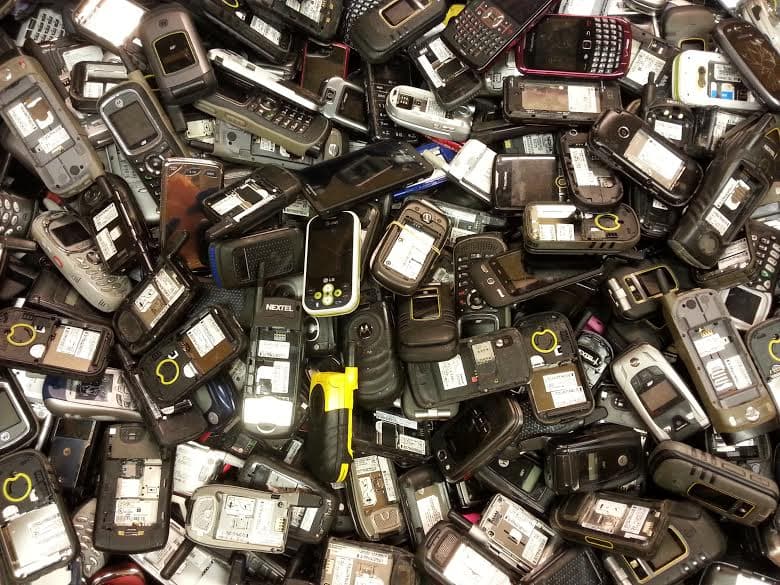
Road to Recovery
What happens to your cell phone after you donate it? Once the Zoo accumulates enough devices to fill a shipping box, they are delivered to Eco-Cell. “They arrive at our little warehouse room, and we go through everything with a fine-toothed comb,” says Ronay. Eco-Cell staff sorts donations, quickly determining which items will be refurbished and resold and which will be recycled.
Considering the amount of energy and resources that go into creating a new phone, it’s far better, environmentally speaking, to extend the life of an old one. But that’s not always possible. Ronay estimates that nine out of ten phones that come in to Eco-Cell are destined for the recycle bin. “We try to reuse as much as possible, but at some point the market for old cell phones is limited. We’ve been doing this so long, we know which ones we can resell. And we know which ones are absolutely on their last legs.”
After being relieved of their batteries (which are processed separately), end-of-life devices are sent to a certified electronics recycler, where they are dismantled and crushed. The resulting fine powder goes to a smelting company. The minerals extracted in the smelting process are recast and sold by the pound on the gold market.
Eco-Cell is a “no landfill” program and works only with facilities that are certified under R2 / BAN or ISO 14000 standards (more information about these recycling certifications can be found on the Eco-Cell website at eco-cell.com). Most of Eco-Cell’s e-waste recycling is handled by Umicore, a Belgian-based firm dedicated to clean technologies and sustainability. They go beyond the three Ts, recovering more than 20 elements (“from Ag to Zn”) in their global operation. Copper can be extracted from A/C adapters, earbuds, cables, and other accessories, and lithium ion batteries are recycled for their nickel.
“Your actions are absolutely making a difference. It’s not abstract. … When I go over to GRACE, the staff are using phones that came from Eco-Cell. I’ve seen it with my own eyes.”
– Beth Schaefer, L.A. Zoo Director of Animal Programs
Money and More
In addition to reducing demand for mining in the Congo, there are other ways recycling your phone can benefit gorillas. All funds raised by the Zoo from the program are directed to gorilla conservation projects. “For every cell phone we recycle or sell, we pass money back to the zoo that sent it in,” Ronay says. Thanks to the collective collecting power of Eco-Cell’s partner zoos, the firm has so far given more than a half million dollars to wildlife conservation.
Your donated phone could even end up in the hands of someone working to help and heal orphaned gorillas in Africa. GRACE is a rehabilitation center for orphaned gorillas (usually youngsters whose mothers were killed by poachers). Donated phones help GRACE staff communicate even in an area where cell and Internet signals are unreliable. In her role as co-chair of GRACE’s Animal Care and Welfare Advisory Group, the Zoo’s Director of Animal Programs Beth Schaefer has been on the receiving end of SOS calls at all hours of the day and night. “It’s like 3 a.m. and my phone rings, and it’s someone at GRACE, saying, ‘Hey, we have this gorilla situation,'” she says. “It’s really gratifying to know that we can help them at the drop of a hat, and they feel like they’re not alone in their efforts—even in these super remote areas they can just pick up the phone and call.”
Schaefer has seen firsthand how the actions of a single person can help a species half a world away—a message she wants to share with readers. “Your actions are absolutely making a difference. It’s not abstract. It’s not, ‘Oh, I gave five dollars and who knows where that goes.’ When I go over to GRACE, the staff are using phones that came from Eco-Cell. I’ve seen it with my own eyes.”
Hearing about how these phones aid GRACE’s conservation and rehabilitation efforts “makes the hairs on my arms stand up,” says Ronay. When the donated devices succumb to heavy use and the harsh Congo environment, he sends replacements. “GRACE is the absolute pinnacle of how we want our program done. I’m so happy to be a part of it, in my tiny little way.”
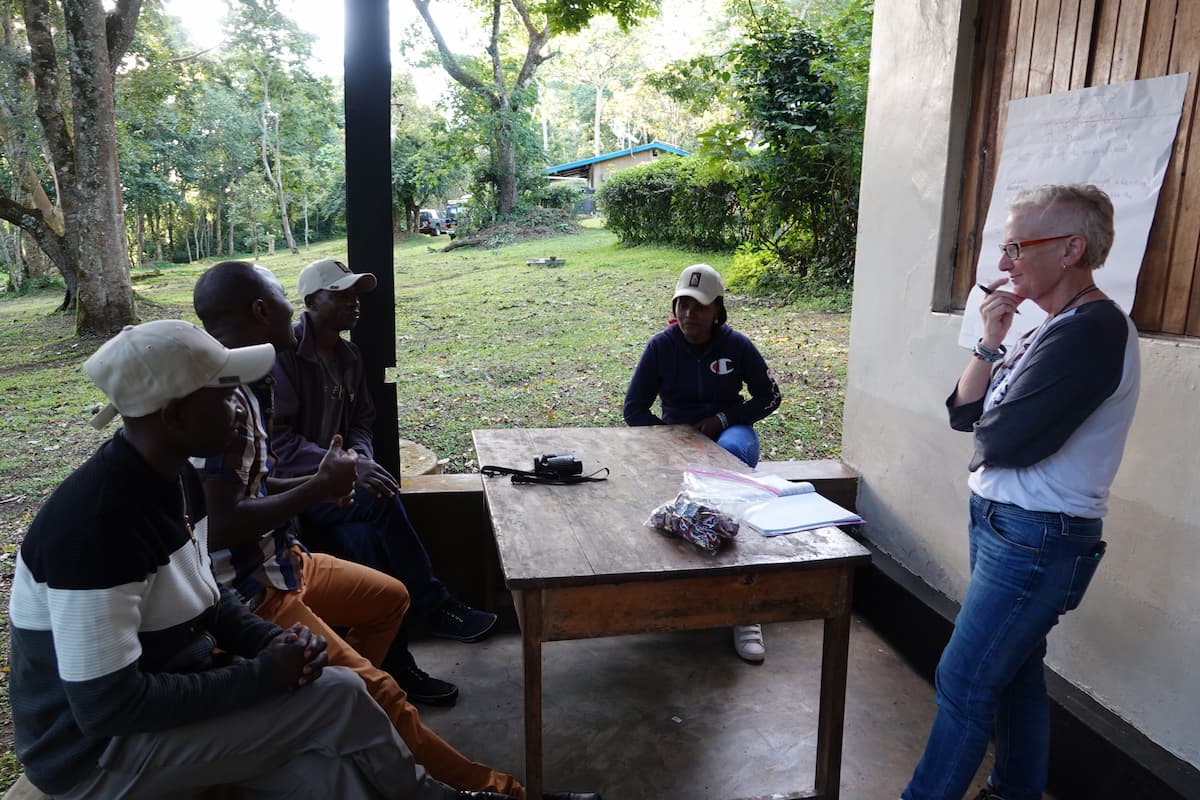
Reduce Your Use
On average, American consumers wait less than two years before upgrading their cell phones. The trend isn’t helped by “planned obsolescence”—a strategy employed by manufacturers to compel users to upgrade by frequently changing design, making new accessories incompatible with older models, or otherwise discontinuing support. In addition to recycling our cast-off devices, slowing down consumption would make a big difference according to Ronay. “Using devices longer than the electronics company intends you to would reduce pressure on parts of Africa. Our consumers here in the United States have to change, because this is where the pressure is coming from. We need to buy less stuff, and hang on to what we do buy longer.”
You can show your love for gorillas by delaying your next cell phone upgrade, signing this pledge to purchase devices free of conflict minerals, and dropping your old phones off at the Zoo the next time you visit. Look for the green mailbox-style container at the bachelor gorilla habitat in Campo Gorilla Reserve. Here’s a link to learn about what devices are accepted and how to prepare them for recycling.
Updated from an article that originally appeared in Zoo View, the award-winning quarterly publication of the Greater Los Angeles Zoo Association.


